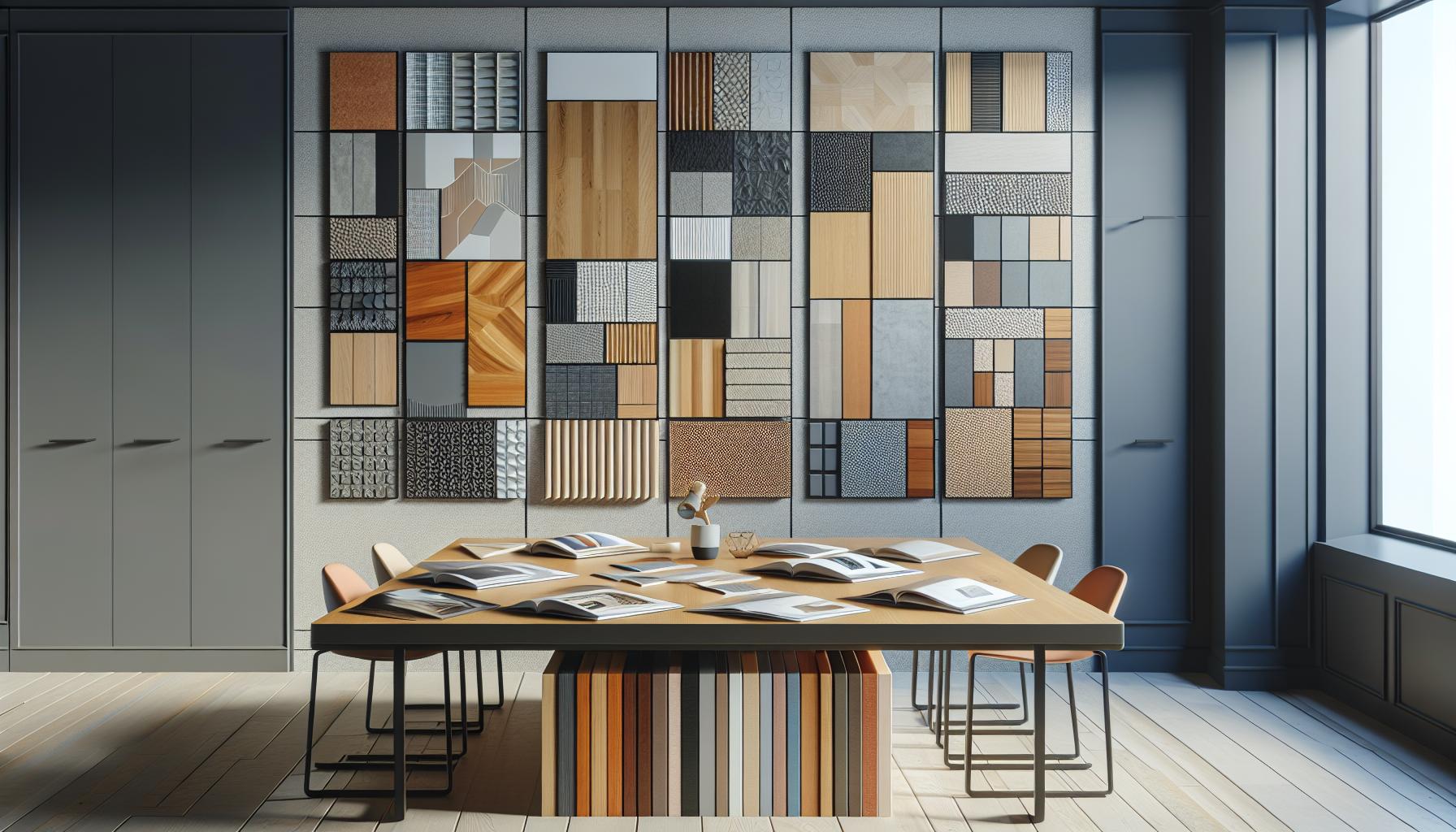Wall panels are an essential element in modern interior design, offering both aesthetic appeal and functional benefits. They can transform a plain space into a stylish environment while providing insulation and soundproofing. This article explores the different types of wall panels, their uses, and why they matter in enhancing both residential and commercial spaces.
What Is a Wall Panel?
A wall panel refers to a flat panel designed for construction or decoration on walls. These panels serve multiple purposes, including improving interior aesthetics, enhancing insulation, and providing soundproofing.
Wall panels come in various materials, such as wood, metal, plastic, and composite options. Each material offers distinct benefits and applications.
- Wood Panels: Often used for their natural appearance, wood panels add warmth to spaces. They’re common in residential settings.
- Metal Panels: These panels are durable and often utilized in commercial spaces. They resist moisture and fire, making them practical for specific environments.
- Plastic Panels: Lightweight and easy to install, plastic panels are popular in areas needing moisture resistance, like bathrooms.
- Composite Panels: Composed of multiple materials, composite panels provide versatility and strength, suitable for various applications.
One of the most popular choices in modern design is WoodenAve Fluted Wall Panels, which offer a sleek and sophisticated texture that enhances both contemporary and classic interiors. These panels add depth to walls while improving acoustics, making them ideal for both residential and commercial applications.
Applications of wall panels extend beyond mere decoration. They function in sound absorption, thermal insulation, and even structural support. Common areas for installation include:
- Residential Spaces: Living rooms, bedrooms, and kitchens benefit from aesthetic enhancements provided by wall panels.
- Commercial Environments: Offices and retail spaces often employ wall panels for branding and sound management.
- Public Areas: Gyms, hospitals, and schools utilize panels to improve acoustics and maintain comfort.
Wall panels encompass a wide range of materials and applications, contributing significantly to modern interior design.
Types of Wall Panels

Wall panels come in several types, each serving specific purposes and offering unique advantages. Understanding these categories helps select the right panel for particular projects.
Material Options
- Wood Panels: Wood provides a classic aesthetic and warmth, suitable for both residential and commercial spaces. Varieties include plywood, MDF, and solid wood.
- Metal Panels: Metal offers durability and a modern appearance. Aluminum and steel panels are popular choices for industrial settings and contemporary designs.
- Plastic Panels: Plastic panels are lightweight and moisture-resistant, ideal for areas prone to humidity, such as bathrooms. PVC and acrylic are common materials found in this category.
- Composite Panels: Composite panels combine materials like wood and plastic, enhancing strength and insulation. These panels are often used in energy-efficient construction.
Design Variations
- Textured Panels: Textured panels add depth and interest, featuring patterns like grooves, ridges, or waves. These panels improve both visual appeal and acoustic properties.
- Flat Panels: Flat panels provide a seamless look, often used in modern designs. They create clean lines and a minimalist aesthetic suitable for various applications.
- Decorative Panels: Decorative panels include elements like murals or artistic engravings. These panels serve as statement pieces or focal points in a room.
- Acoustic Panels: Acoustic panels help absorb sound, improving the acoustic environment. These panels are vital in music studios, theaters, and open office spaces.
Benefits of Wall Panels
Wall panels offer multiple advantages that improve both the look and functionality of spaces. Their features include aesthetic appeal and insulation properties.
Aesthetic Appeal
Wall panels significantly improve the visual aspect of a room. They come in diverse materials and designs, allowing for customization that caters to different tastes and styles. Textured panels inject depth, while flat panels maintain a clean, minimalist look. Decorative panels act as focal points that can transform a space’s ambiance. The variety of finishes available, including wood, metal, and composite, ensures compatibility with any existing decor.
Insulation Properties
Wall panels provide effective insulation, contributing to energy efficiency in homes and buildings. They reduce heat transfer, keeping spaces warmer in winter and cooler in summer. The incorporation of specialized materials enhances thermal resistance. Additionally, soundproofing capabilities exist, minimizing noise pollution from outside and within rooms. This feature is especially beneficial in residential areas and commercial spaces where sound control is essential.
Installation Process
The installation of wall panels requires careful planning and execution to ensure a successful outcome. Following established methods is essential for achieving the desired aesthetic and functional benefits.
Preparation Steps
- Assess the Area: Measure the wall’s dimensions to determine how many panels are necessary. Evaluate the wall surface for any imperfections that may need repair.
- Select Panels: Choose the type of wall panel based on the desired style, material, and function, such as acoustic or decorative features.
- Clean the Surface: Ensure the wall is clean and dry. Remove any dust, debris, or mold to promote proper adhesion.
- Mark Guidelines: Use a level and chalk line to mark where each panel will be placed. This will serve as a guide during installation.
- Acclimate Panels: Allow panels to adjust to the room’s temperature and humidity for at least 24 hours to avoid issues after installation.
Tools Required
- Measuring Tape: Essential for measuring wall dimensions and panel sizes accurately.
- Level: Ensures panels are straight during installation.
- Chalk Line: Useful for marking precise guides on the wall.
- Utility Knife: Ideal for cutting panels to the correct size.
- Adhesive or Fasteners: Depending on the panel type, use appropriate adhesive for a permanent bond or fasteners for removable options.
- Caulk Gun: Needed for applying adhesive and sealing gaps between panels.
- Safety Gear: Including gloves and goggles to ensure safety during installation.
Conclusion
Wall panels are a transformative element in modern design. They not only improve the aesthetic appeal of spaces but also provide essential functional benefits. With a variety of materials and styles available, wall panels cater to diverse preferences and requirements. Their ability to improve insulation and soundproofing makes them invaluable in both residential and commercial settings.
Choosing the right wall panel can significantly impact the overall atmosphere and efficiency of a space. As interior design continues to evolve, wall panels will remain a popular choice for those seeking to create beautiful and functional environments. Embracing this versatile solution can lead to remarkable transformations in any setting.
Frequently Asked Questions
What are wall panels and their purpose?
Wall panels are flat panels used for construction or decoration on walls. They enhance the aesthetic appeal of a space while providing functional benefits like insulation, soundproofing, and structural support. Available in various materials, wall panels serve both residential and commercial environments.
What materials are wall panels made from?
Wall panels come in various materials including wood, metal, plastic, and composite options. Each material offers distinct advantages, such as wood for warmth, metal for durability, plastic for moisture resistance, and composites for enhanced strength and insulation.
How do wall panels improve energy efficiency?
Wall panels help improve energy efficiency by reducing heat transfer. They provide insulation that maintains comfortable temperatures year-round, minimizing energy costs. This benefit is especially valuable in homes and offices seeking to optimize their heating and cooling systems.
What types of wall panels are available?
There are several types of wall panels, including textured panels for depth, flat panels for minimalism, decorative panels as focal points, and acoustic panels for sound quality improvement. Each type serves a unique purpose suited for different design needs.
What is the installation process for wall panels?
The installation of wall panels involves assessing the area, selecting appropriate materials, cleaning surfaces, marking guidelines, and acclimating panels to the environment. Gathering tools like measuring tape, adhesive, and safety gear is essential for a successful installation.
Why are wall panels beneficial for soundproofing?
Wall panels are beneficial for soundproofing as they can absorb sound and reduce noise pollution. Acoustic panels, in particular, are designed specifically to enhance sound quality and minimize disturbances in homes and commercial spaces, creating a more serene environment.
Can wall panels be used in commercial environments?
Yes, wall panels are ideal for commercial environments. They enhance aesthetics while providing functional benefits like soundproofing and insulation. Their versatility makes them suitable for offices, restaurants, and public areas, creating inviting and efficient spaces.
How do I choose the right wall panels for my space?
Choosing the right wall panels involves considering your aesthetic preferences, functional requirements, and the room’s environment. Evaluate material options based on durability, moisture resistance, and insulation properties. Always keep in mind the overall design and purpose of the space.

